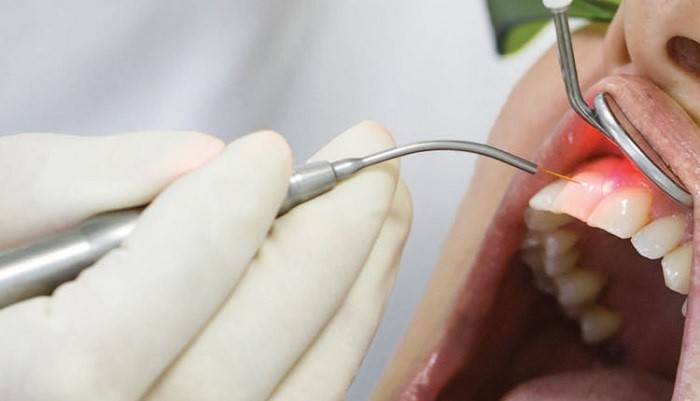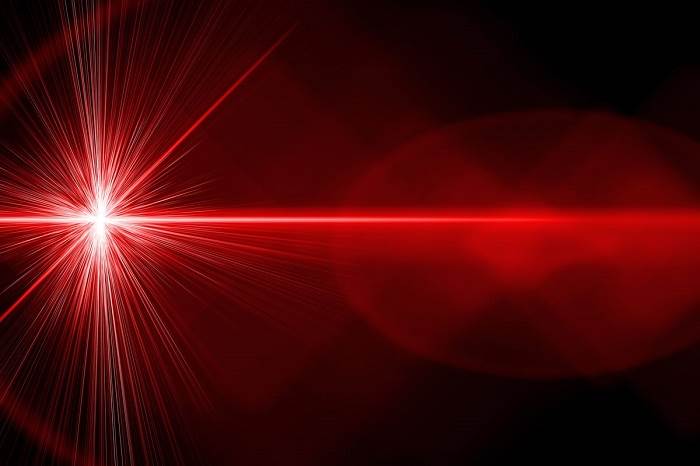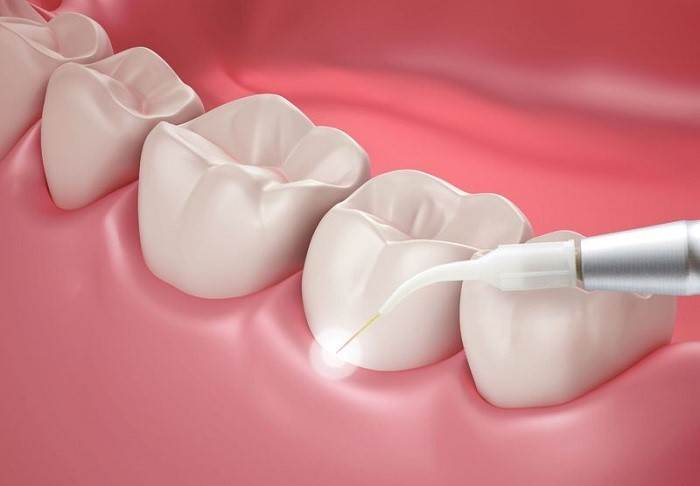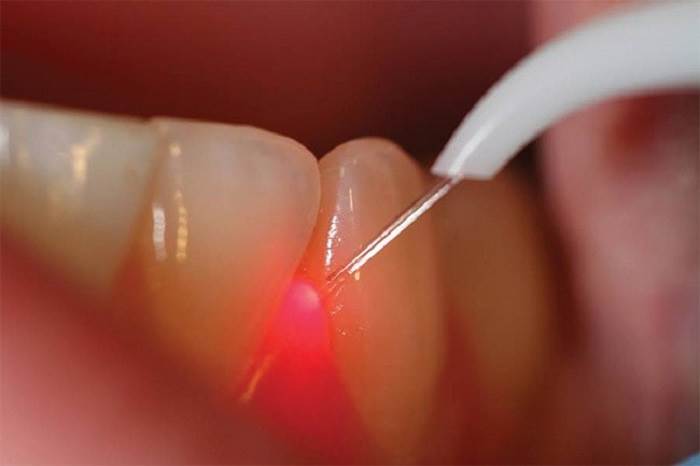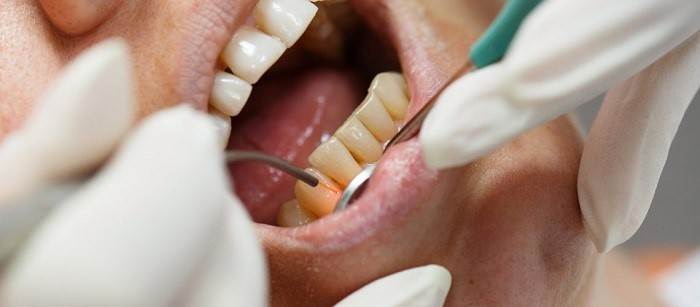Laser dentistry is the use of lasers to treat a number of different dental conditions. Laser dentistry potentially offers a more comfortable treatment option for a number of dental procedures involving hard or soft tissue compared to drills and other non-laser tools. Laser creates light energy in a very narrow and focused beam. This laser light produces a reaction when it hits tissue, allowing it to remove or shape the tissue.
Lasers can make dental treatments more efficient, cost effective, and comfortable. The Food and Drug Administration (FDA) has approved laser dentistry as a treatment option for several dental conditions.
How are laser treatments performed?
The two main types of procedures used for laser dentistry are hard tissue and soft tissue procedures. Hard tissue refers to the teeth, and soft tissue refers to the gums.
hard tissue procedures
Common hard tissue procedures include:
- Cavity detection.Lasers can detect cavities early by finding evidence of tooth decay.
- Tooth preparations and dental fillings.Local anesthesia and traditional drills are often not needed with laser treatments. Lasers can kill bacteria in a cavity, which can aid in the long-term health of a tooth.
- Treating tooth sensitivity.Teeth that have sensitivity to hot and cold can be treated with dental lasers that seal tubules on the tooth’s root.
Soft tissue procedures
Common soft tissue procedures include:
- Treating a “gummy smile.”Lasers are used to reshape gum tissue associated with “gummy smile,” in which the gums’ length covers much of the tooth.
- Crown lengthening.This procedure reshapes both gum tissue and bone for healthier tooth structure, which helps with placing restorations on the teeth.
- Treating tongue frenulum attachment.Those with a thick or tight frenulum (the fold of skin under the front part of tongue that anchors to the mouth floor) may benefit from a laser frenectomy. This treatment helps children whose restricted frenulum causes them to be tongue-tied, have difficulty breastfeeding, or have a speech impediment.
- Removing soft tissue folds.Lasers can remove soft tissue folds from ill-fitting dentures without pain or sutures.
Other laser procedures
Other laser procedures include:
- Viewing tissues.Optical coherence tomography allows a doctor to safely see inside a tooth or gum tissue.
- Removing benign tumors.Lasers can remove tumors from the palate, gums, and sides of the lips and cheeks through a pain- and suture-free method.
- Treating obstructive sleep apnea.Lasers can reshape the throat and relieve associated breathing problems when sleep apnea is caused by tissue overgrowth in the throat.
- TMJ (temporomandibular joint) treatment.Lasers can help reduce pain and inflammation in the joint.
- Nerve regeneration.Lasers can help regenerate damaged blood vessels, nerves, and scars.
- Treating cold sores.Lasers can minimize healing time and reduce pain from cold sores.
- Teeth whitening.Lasers speed up the bleaching process during teeth-whitening sessions.
What types of lasers are used?
Dental professionals use either hard tissue or soft tissue lasers, depending on the treatment. Some will use both types if the treatment allows.
- Hard tissue lasers can cut through tooth structure. Their wavelengths are absorbed through the combination of water and a specific mineral found in teeth. These lasers are most often used to prep or shape teeth for composite bonding, to repair dental fillings that have worn down, and to remove some tooth structure.
- Soft tissue lasers can be absorbed through water and hemoglobin. Hemoglobin is a protein found in red blood cells. These lasers are used to treat periodontitis, including killing bacteria and activating tissue regrowth. Soft tissue lasers seal nerve endings and blood vessels while they penetrate the tissue. For this reason, many experience almost no pain after laser treatment. The lasers also promote faster healing of the tissue.
What are 5 benefits of laser gum surgery?
The goals of laser gum surgery are to reverse the damaging effects of bacteria and to help you maintain a healthy mouth. There are many other benefits as well.
Less invasive
Laser surgery is far less invasive than older methods of gum surgery. Traditional gum surgery requires medical instruments that slice into the gum tissue, leaving painful wounds that require stitches and healing time. Because the laser never cuts into your gum tissue, it offers a decreased risk of infection, sensitivity, and bleeding after the procedure. This also means the risk of complications is low. Because laser treatment is so gentle, many patients are less afraid to get their oral health problems fixed.
Treats gum disease
Gingivitis leads to gum disease when not treated in time, and gum disease leads to tooth loss if it’s never treated. Patients with advanced gum disease can save their natural teeth with this laser treatment. Gum disease leaves you with deep pockets of bacteria that regular dental cleaning can’t fix. A laser is more likely to eliminate all the harmful bacteria, even when they’re stuck in deep pockets.
Improves smile
Straight white teeth help you feel confident in your smile. Gums also play an important role in your self-esteem. Do your teeth feel “short,” or do you think your smile is too “gummy”? If you feel the proportion of gum tissue to teeth is unbalanced, it could make you self-conscious about your smile. Laser gum surgery contours the shape of your gums and trims the excess tissue, giving you the beautiful smile you’ve always wanted.
Lasers are precise
No healthy gum tissue is damaged during laser gum surgery. The specialists use the laser to fix damaged tissue and stimulate new, healthy tissue growth. This method is extremely accurate and precise. The laser itself distinguishes healthy gum tissue from harmful gum tissue. Additionally, it won’t affect bones or teeth.
Fast recovery
Traditional gum surgeries require weeks of recovery that include pain, swelling, and a liquid diet. The recovery time for laser gum surgery lasts 24 hours, and patients typically only feel mild discomfort. Because there’s no cutting or stitching involved, the laser process offers quick recovery with minimal downtime. By not using traditional surgical tools such as scalpels, your doctor removes less tissue, causing less pain, bleeding, and inflammation.
How Are Lasers Used In Periodontal (Gum) Treatment?
One of the main uses of the soft tissue dental laser is as an adjunctive aid in periodontal treatment. When gum disease is present in the mouth, bacteria can build up in the pockets between the gums and tooth roots. Their toxins cause bone destruction. This can lead to loosening of the teeth which ultimately leads to tooth loss if the bacterial infection isn’t handled. But lucky for us, bacteria prefer darkness and do not like light — especially bright, high energy light! This is why the laser can be used to reduce the bacterial count in a periodontal (gum) pocket almost to a level of sterilization. Also, it can remove unwanted inflamed gum tissue in the area, and help seal blood vessels and nerves. As a result, surgical procedures are more bloodless and healing is generally quicker and more pain-free. But most importantly, adding laser light deep in periodontal pockets, along with the usual mechanical and chemical treatment, can enhance the attachment of the teeth to the surrounding bone, thereby lessening the chances of tooth loss. Afterall, you keeping your teeth is dentists ultimate goal!
How Are Lasers Used In Root Canal Treatment?
Root canal treatment requires careful cleaning and sealing of the internal canal systems of an infected tooth, where the nerves and blood vessels once were. The problem is, it is extremely difficult to clean and seal so many canals and microscopic tubules where bacteria can lodge and cause problems. In fact, most failures of root canal treatment are from this one factor. So before the root canal is sealed, laser energy, via a specially designed radial laser tip, is passed deep to the root tip and radiated outward to all areas as much as possible, to kill these hiding bacteria. While long term studies are not available to substantiate the effectiveness of this, it is still reasonable to surmise that this may help due to the antibacterial properties of laser energy.
How Do Lasers Remove Decay?
For decay removal, some dentists are using laser energy in conjunction with a water mist that accomplishes vaporization (ablation) of decay. This particular laser wavelength is attracted to and excites water molecules. Since decay has water in its content, it can be excited to an extent of vaporization (ablation). Various power settings are used with varying amounts of water mist. It’s really a very gentle procedure and does not require anesthesia in most cases. Lasers can’t be used for all cavities. Some areas are so deep or around corners, it is best to use the drill. Also enamel is very hard and can be removed with a laser, but it is slow. The drill can really speed things up on that type of situation.
How Are Lasers Used During Oral Surgery?
The fact is lasers can be used to cut any soft-tissue in the mouth that a scalpel is used for. Dentists use laser energy in conjunction with a water mist that accomplishes vaporization (ablation). When the laser tip is focused where needed over the soft tissue, it appears to cut similar to a scalpel. It’s really a very gentle procedure and does not require anesthesia in most cases. In our office, we frequently use a laser for gum (periodontal) surgery, wisdom teeth surgery, cosmetic recontouring of gum tissues, removal of cysts or tumors and muscle attachment (frenum) removal, just to name a few. using the laser for these surgical procedures provides the added benefits of laser anesthesia, less bleeding and less post-operative pain, generally with quicker healing due to the gentler nature of the laser light.
LASER GUM TREATMENT RECOVERY
After surgery, recovery instructions are provided to all of patients. With laser gum treatment, you can expect to heal faster than traditional gum surgery. The length of time it will take your gums to heal depends on the severity of your gum disease. It can take anywhere from 2 – 4 weeks, while deeper pockets can take months to completely heal. Because your mouth will be tender and inflamed, a soft food diet is advised for the first few days. A follow-up appointment may be necessary to monitor your gum health.
Disadvantages of laser dentistry
- Lasers can’t be used on teeth that already have certain types of filling, such as metal amalgam.
- Hard lasers can sometimes injure tooth pulp.
- Some laser procedures still require anesthesia.
- Drills are still sometimes needed to complete fillings, including shaping, adjusting the bite, and polishing the filling.
- Certain procedures can’t be done with laser treatment, depending on the preexisting surrounding tissue or components involving the tooth or gums.
- There is a risk of gum injury.
What risks are associated with laser dentistry?
The risks of laser dentistry are relatively small. It’s important to find a qualified dental professional, as using the wrong wavelength or power level could damage tissue. Additionally, some providers worry that advertisers are pushing the use of laser treatment beyond what people actually need.
Your dentist will have you use special glasses to protect your eyes from the laser.
Cost
The actual cost of a particular laser dentistry procedure is based on the treatment. Lasers have been used in the industry now for over 25 years and have been approved in over 20 different types of procedures. However, there is a wide range of possible costs for each a different procedure. The variables contributing to the cost are no different than a traditional approach to a procedure. It starts with you the patient your individual needs. Your geographic location can make a big difference in the cost as well as the services offered. The location in your mouth and the severity of the problem at hand plays into the difficulty and the time dedicated to the procedure. Compared to non-laser treatment, they may be less expensive because the laser treatment is usually completed in fewer sessions.

